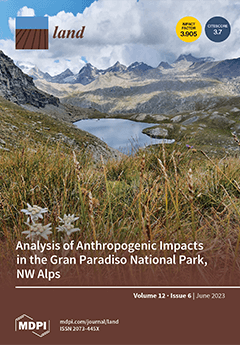Lack of maintenance can lead to ‘weedy’ spontaneous vegetation on green roofs. Aspects of green roof design, including substrate depth and roof height, have been shown to influence the composition of spontaneous vegetation. In drier climates,
Sedum species are often planted on shallow substrate ‘extensive’ green roofs and irrigated during summer to maintain cover. However, the response of spontaneous vegetation to
Sedum cover and water availability is unclear. Understanding this relationship could help minimise maintenance and maintain
Sedum vegetation cover. We hypothesised that increasing
Sedum (
Sedum mexicanum) cover and reduced water availability would reduce the abundance, biomass, species and functional richness, and the community weighted mean specific leaf area (SLA; CWM by abundance) of spontaneous plant communities. We conducted a 10-month experiment in green roof microcosms planted with
S. mexicanum (0%, 25%, 50%, 75% and 100% total cover), subjected to a well-watered or water-deficit irrigation treatment, and sown with a mix of 14 plant species that commonly occur as spontaneous on green roofs. We measured spontaneous species abundance, community biomass, and functional traits (specific leaf area, leaf dry matter content, and relative growth rate), and calculated species and functional richness. Increasing
S. mexicanum cover reduced spontaneous species abundance and species and functional richness but did not affect community biomass. Species richness was affected by the interaction of
S. mexicanum cover and watering treatment and was greatest in well-watered microcosms with 0%
S. mexicanum cover. Increased water availability increased spontaneous plant biomass but did not affect functional richness. The SLA of spontaneous communities was affected by the interaction of
S. mexicanum cover and watering and was significantly greater in well-watered treatments where
S. mexicanum cover was <100%. Therefore, maximising
Sedum cover and limiting water availability on green roofs will likely limit the abundance, biomass, and diversity of spontaneous vegetation. Conversely, for green roofs where substrate is left to be naturally colonised, increasing water availability could encourage establishment and increase functional richness of spontaneous vegetation.
Full article





